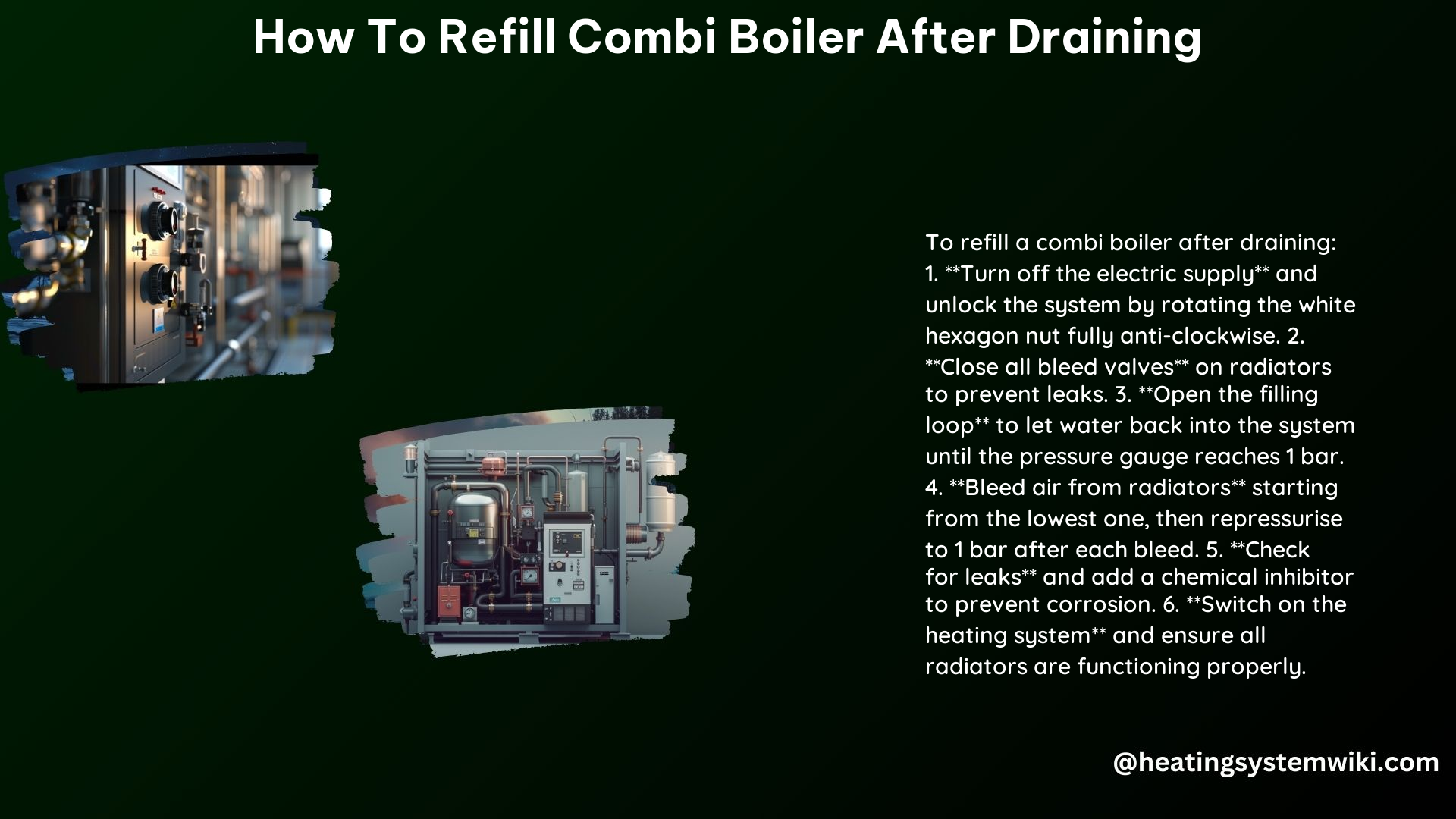Refilling a combi boiler after draining is a crucial step in maintaining the efficiency and longevity of your home’s heating system. This comprehensive guide will walk you through the process, providing detailed instructions and technical specifications to ensure a successful and hassle-free refill.
Preparing for the Refill
Before you begin the refilling process, it’s essential to ensure that all necessary valves are properly closed to prevent water from leaking out during the procedure.
-
Close All Radiator Vent Valves: Locate the vent valves on each radiator and turn them clockwise to the closed position. This will prevent air from entering the system during the refilling process.
-
Close the Drain Valve: Identify the drain valve, typically located at the bottom of the boiler or near the system’s lowest point. Ensure that this valve is securely closed to prevent water from draining out.
-
Remove the Hose: Disconnect the hose from the drain valve, allowing any residual water to drain out.
Refilling the Combi Boiler

With the necessary valves closed, you can now proceed to refill the combi boiler.
-
Open the Filling Loop: Locate the filling loop, usually situated next to the boiler. This loop is responsible for allowing water to flow back into the system. Open the filling loop by turning the valve counterclockwise.
-
Monitor the Pressure Gauge: Keep a close eye on the pressure gauge, which is typically located on the front of the combi boiler or in the airing cupboard. Fill the system until the pressure reaches the recommended level, which is usually around 1 bar (14.5 psi).
| Pressure Gauge Reading | Heating System Status |
|---|---|
| 1 bar (14.5 psi) | System is off |
| 1.5 bar (21.8 psi) | System is running |
- Bleed the Radiators: Start with the downstairs radiators or those furthest from the boiler, and use a radiator bleed key to release any trapped air. Check the pressure gauge after each radiator and add more water as needed to maintain the recommended pressure.
| Radiator Bleeding Sequence |
|---|
| 1. Downstairs radiators |
| 2. Radiators furthest from boiler |
| 3. Remaining radiators |
- Check for Leaks: Once all radiators have been bled, thoroughly inspect the entire system for any signs of leaks. Address any leaks promptly to prevent water damage and ensure the system’s integrity.
Optional: Adding a Chemical Inhibitor
While not strictly necessary, adding a chemical inhibitor to the system can be beneficial in the long run. These inhibitors help to slow down internal corrosion and prevent the buildup of radiator sludge, which can impair the system’s efficiency.
When selecting a chemical inhibitor, be sure to choose a product that is compatible with your combi boiler and heating system. Follow the manufacturer’s instructions carefully for the proper dosage and application.
Finalizing the Refill Process
-
Switch On the Heating System: Turn on the boiler and check that all radiators are heating evenly. The pressure gauge should read around 1.5 bar (21.8 psi) when the heating is running and 1 bar (14.5 psi) when it’s off.
-
Perform a Final Inspection: Conduct a thorough inspection of the entire system, checking for any leaks or other issues that may have arisen during the refilling process.
By following these detailed steps, you can confidently refill your combi boiler after draining, ensuring the continued efficient and reliable operation of your home’s heating system.
